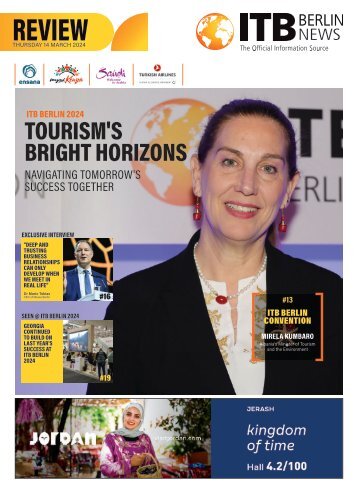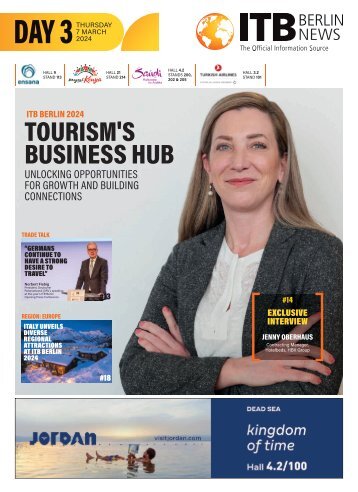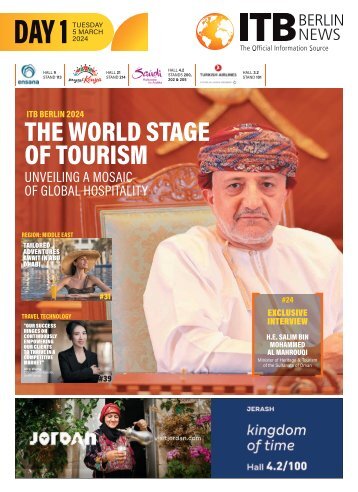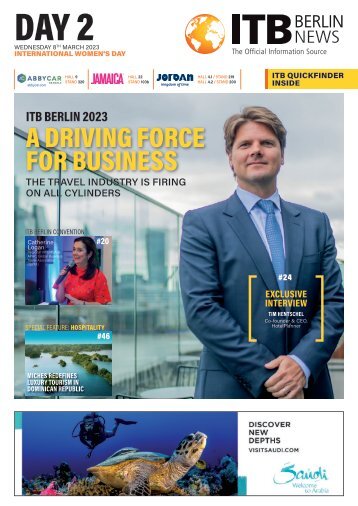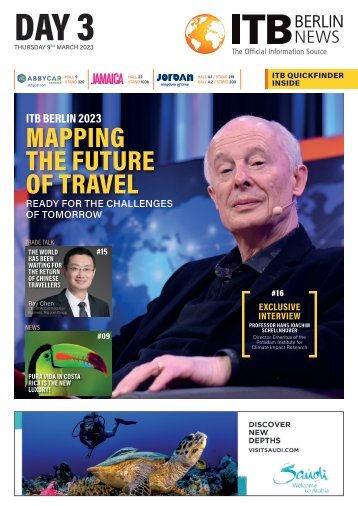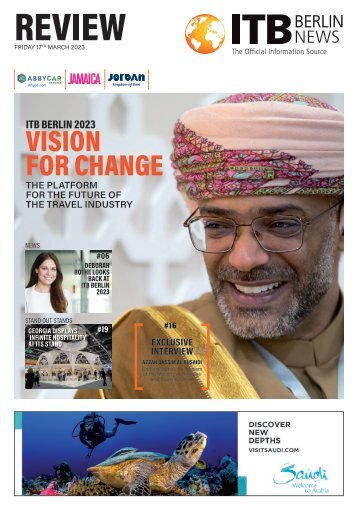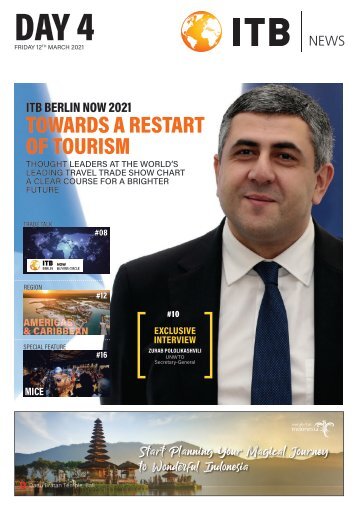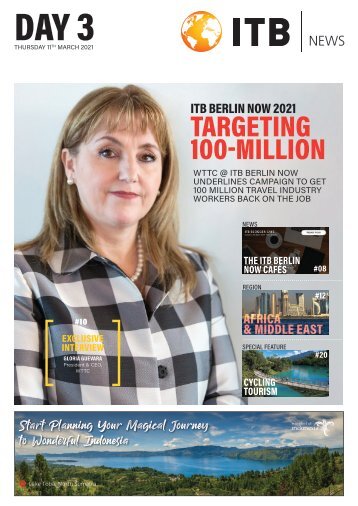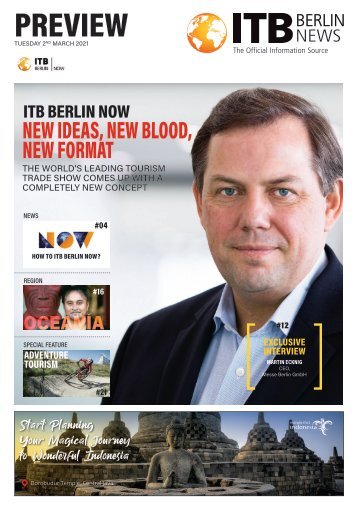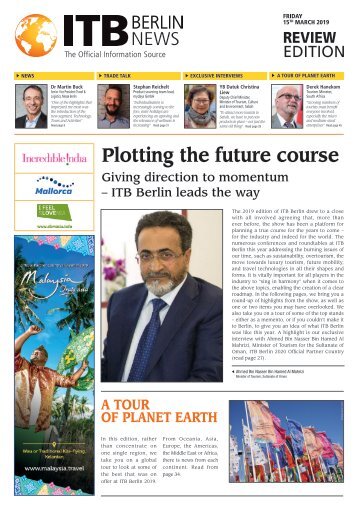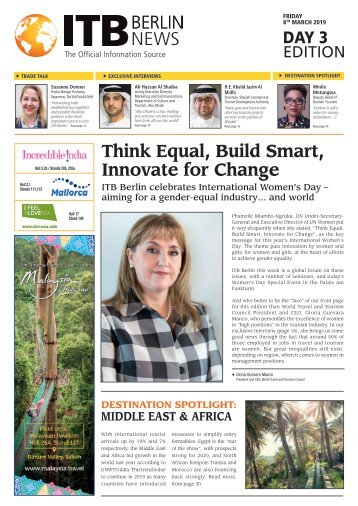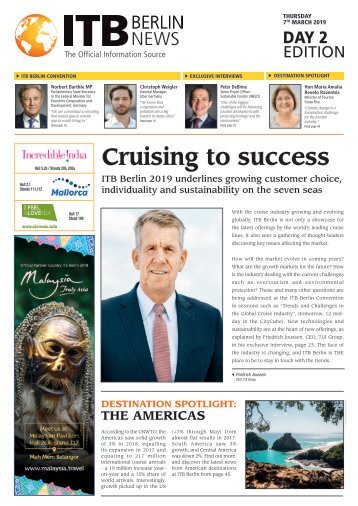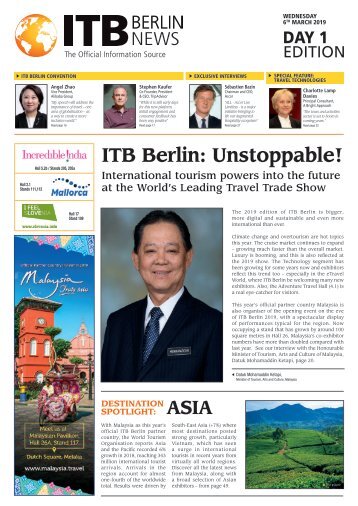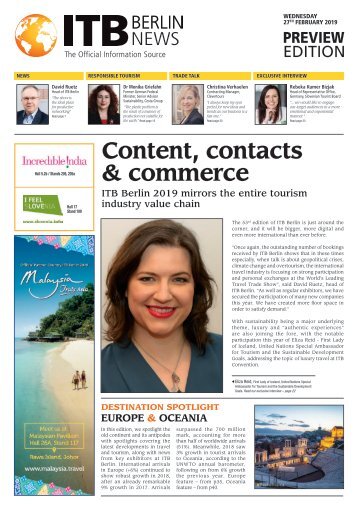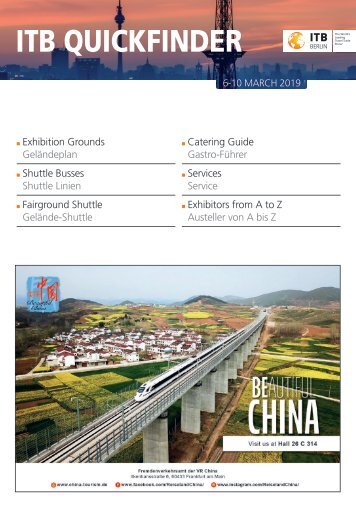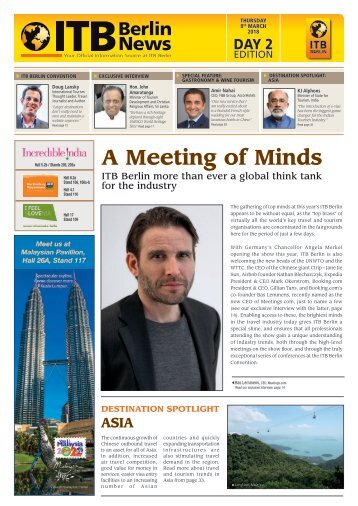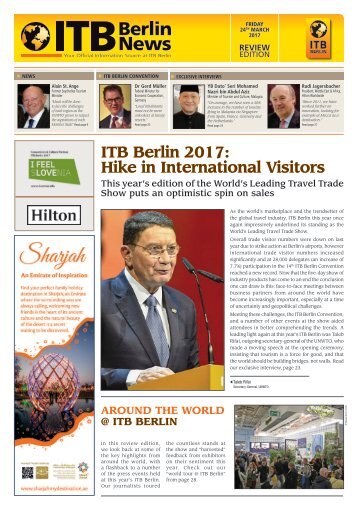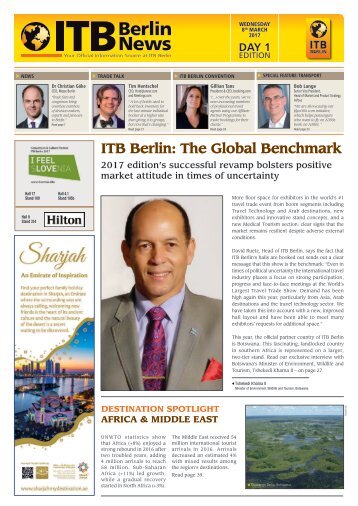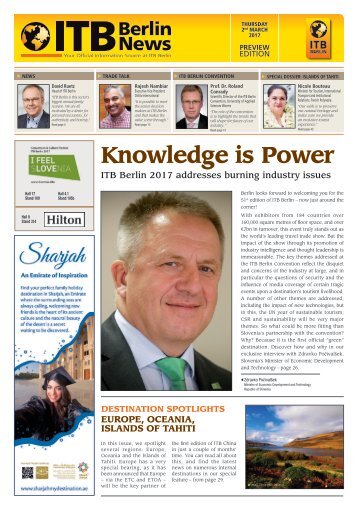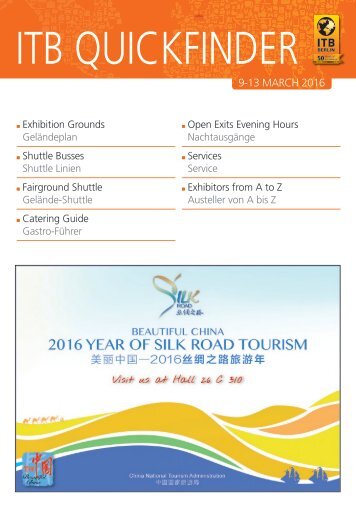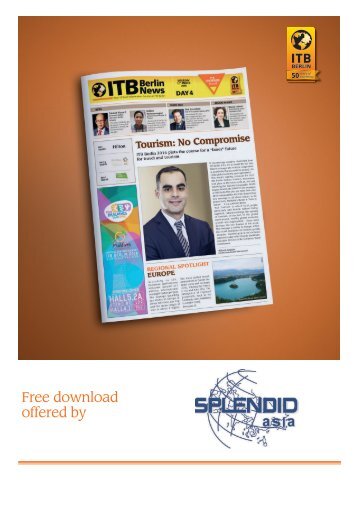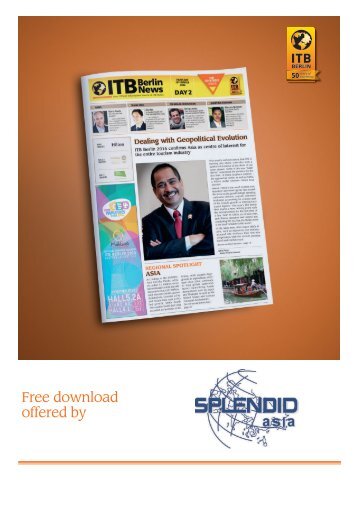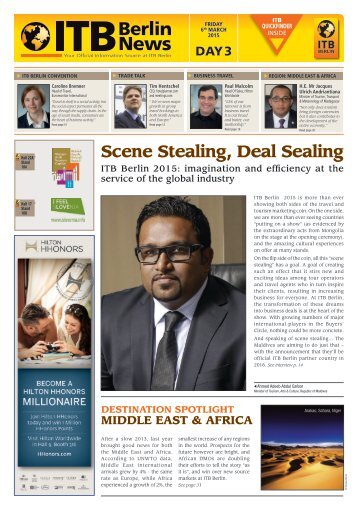
ITB Berlin News - Day 2
- Text
- Berlin
- Tourism
- Destination
- Markets
- Countries
- Mongolia
- Western
- Hotels
- Indonesia
- Destinations
- Www.cleverdis.com
ASIA REGION 19 China
ASIA REGION 19 China Outbounds, Yes, but SE Asia Also a Hot Market Marcio Favilla, Executive Director, Competitiveness, External Relation and Partnerships, UNWTO outlines research findings While China may dominate the headlines, a new hot spot of opportunity is emerging from the heart of Asia. Southeast Asia- with an estimated population of 600 million, dynamic economies powered by a burgeoning middle class with buoyant consumer confidence: it is the region to watch. Marcio Favilla, Executive Director, Competitiveness, External Relation and Partnerships, UNWTO has been closely following developments in the region. We asked him to tell us more… Marcio Favilla Executive Director, Competitiveness, External Relation and Partnerships, UNWTO …ANY MARKETING STRATEGY SHOULD LOOK AT SOUTHEAST ASIA NOT AS A BUNCH OF SOURCE COUNTRIES THAT ARE ALL THE SAME, BUT AS MARKETS WITH SPECIFICITIES AND INDIVIDUAL INTERESTS We have recently launched a new publication on new source markets – especially from Southeast Asia, such as Indonesia, Malaysia, Singapore and Vietnam. These countries have to be looked at as very important, but not-so-obvious source markets. They are increasingly important for the intra-regional tourism, but also for inter-regional tourism as well. People have been very focused on China, and they are right to do so, as in 2012, China became the first source market in the world, surpassing Germany and the United States, spending in one year 102 billion dollars abroad, and the phenomenal growth of China as a source market continues, with growth year on year to the end of 2013 estimated at over 30 percent. But Asia has other important, or increasingly important source markets. If you look at any region in the world, the primary source markets, with very few exceptions, are from the same region; most countries are visited by people from neighbouring countries. In Southeast Asia, these countries all have growing economies, a growing middle class, a young population that is becoming more and more educated, they have more and more access to the Internet and mobile applications, so they have to be looked at. Are they all the same? No… they are very different from one another, so any marketing strategy should look at Southeast Asia not as a bunch of source countries that are all the same, but as markets with specificities and individual interests. So what should people working in the European tourism and hotel markets be changing to take into account the fact that there’s this huge growing market they will soon have to cater for? Europe will continue to receive most of its tourists from Europe, and according to our estimates, Europe will continue to be the most important destination in the world. Asia Pacific has been growing, gaining share, but in absolute terms, Europe will continue to be the most important for the coming 20 or 30 years. Having said that, the European countries are correct in being interested in the new affluent middle and upper middle class and high class from countries of this region. Will they all be interested in the same things in the same countries in Europe? No. Our research that has just been published shows they have diverse interests. The “bulk” of them are not interested in Europe, but others are. Singaporeans for example are very interested in the UK. But we have to look at each market and consider whether significant numbers could be enticed to go to Europe. Then we have to see whether it makes sense to make big investments in marketing in these countries. The answer is yes – in some cases – but European countries should not just go and invest without doing the right amount of research to identify the niches to bring people from this region. They will grow in absolute terms and relative terms, but look at each country and see where the potential lies. Europe is very diverse as well, so it attracts different kinds of people for different reasons. So should there be better education of European players concerning these Asian source markets? Indeed. But there is also the issue of visas that is very important, because there is a clear barrier for some nationalities to go to Europe. Our research also shows that even if they maintain their visas, countries can do much more in terms of the way they process the visas, and the information they convey to the potential market. It has to be in their language as well; not only in English. While retaining control of the reception of documents and delivery of visas, some European countries are now outsourcing the visa processing activities to private companies… the decision still lies with the country. This is a good initiative, because you can be present in many more places and you can reach second and third-tier cities of the region. So there are many ways of reaching out and doing better in terms of the marketing, but you have to do some research before investing. ITB BERLIN NEWS • Thursday 6 th March 2014
- Page 1: THURSDAY 6 th MARCH 2014 DAY 2 EXCL
- Page 5 and 6: NEWS 5 Tourism Continues Upward Pat
- Page 9 and 10: ITB BERLIN CONVENTION 9 No More Que
- Page 11: ITB BERLIN CONVENTION 11 The Holist
- Page 14 and 15: 14 EXCLUSIVE INTERVIEW Clear Sailin
- Page 17: ASIA REGION 17 TRAVEL TRENDS IPK Re
- Page 21 and 22: ASIA REGION 21 Riding the Asian Hot
- Page 23 and 24: ASIA REGION 23 Quality Accreditatio
- Page 25 and 26: 25 HOSPITALITY / RESTAURANTS / BARS
Inappropriate
Loading...
Mail this publication
Loading...
Embed
Loading...
